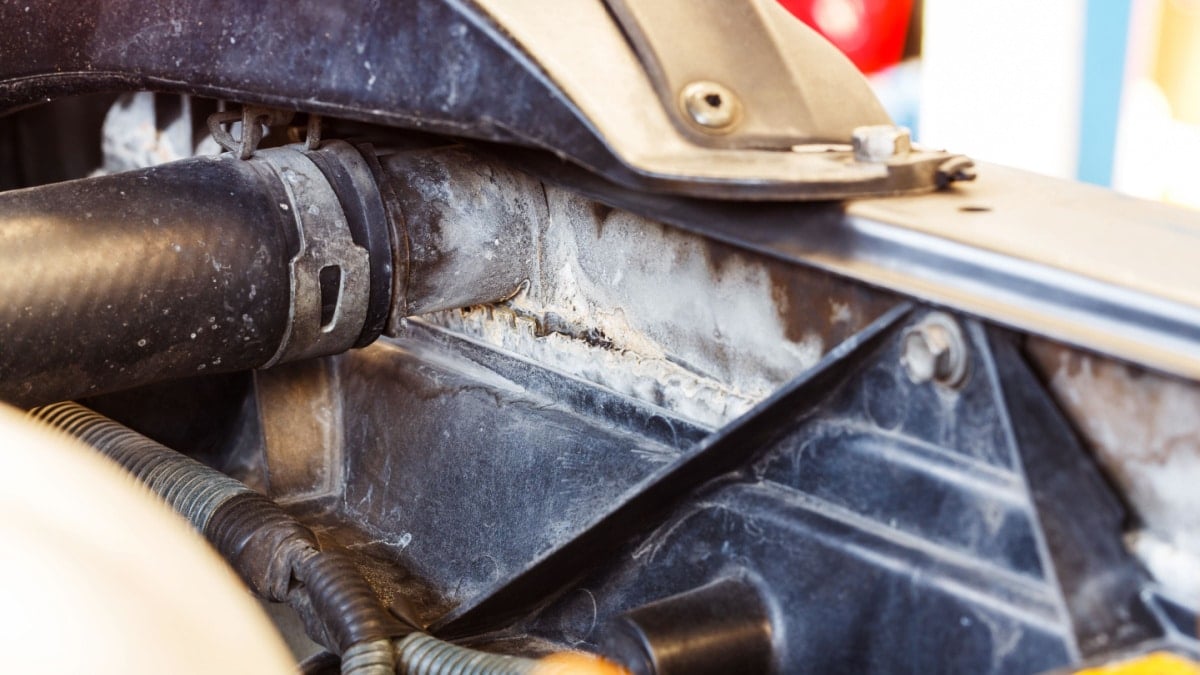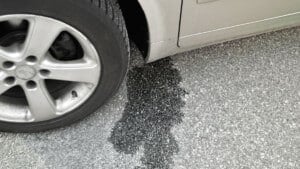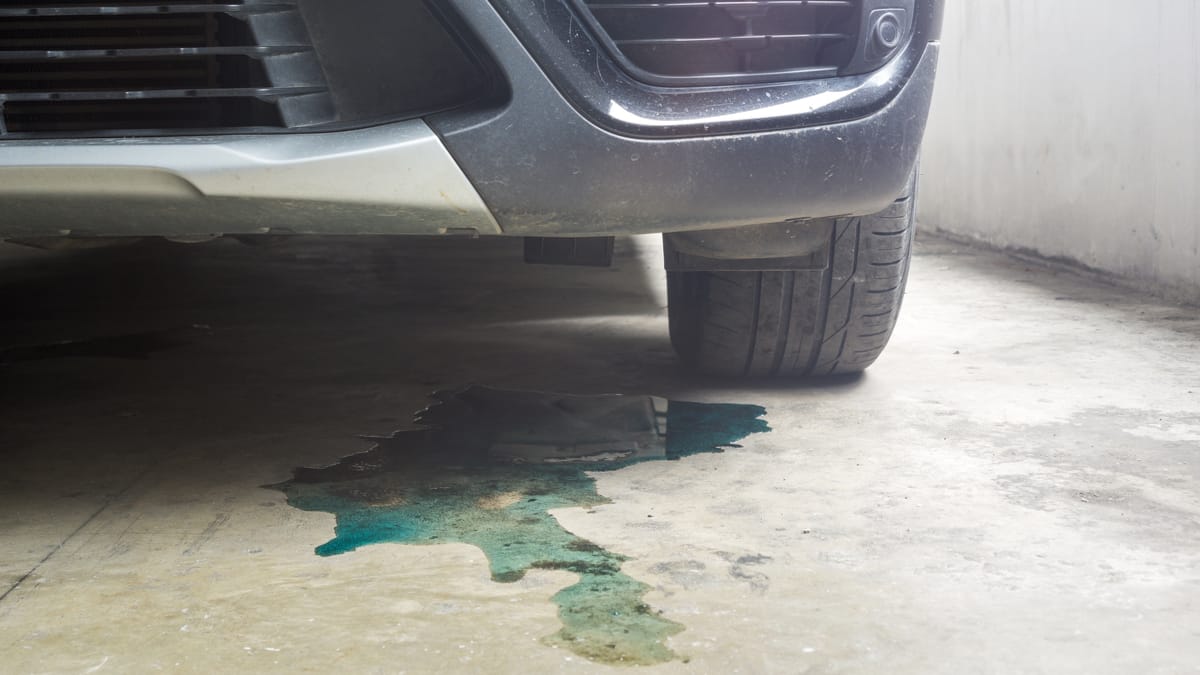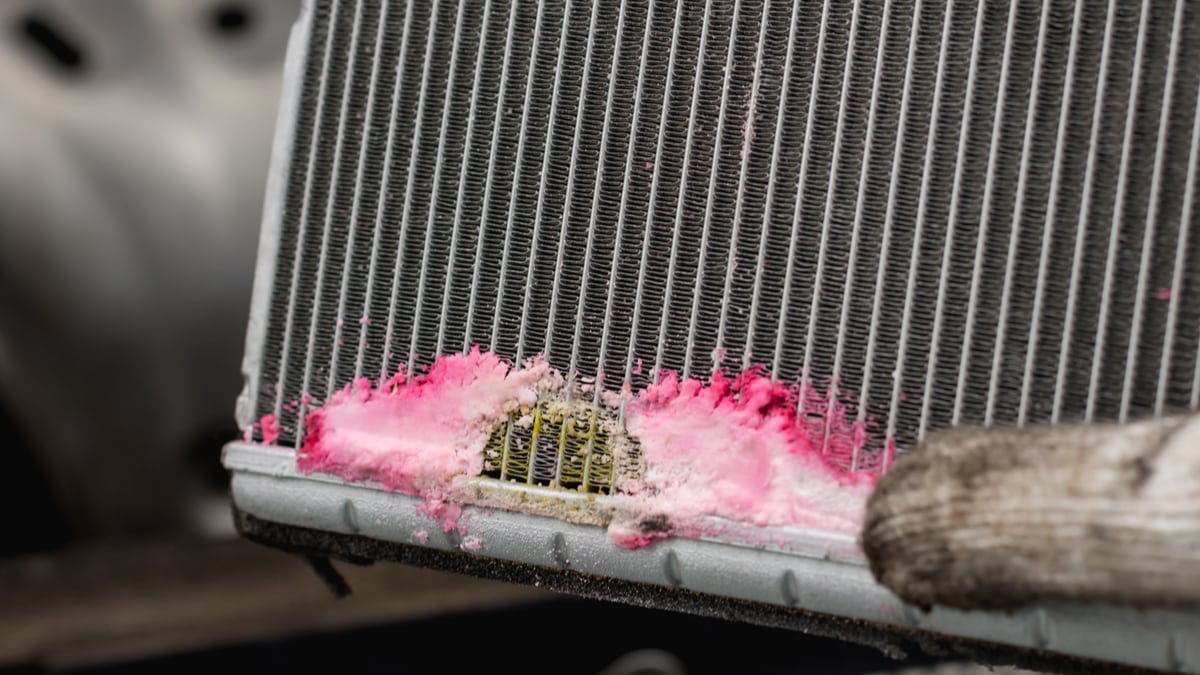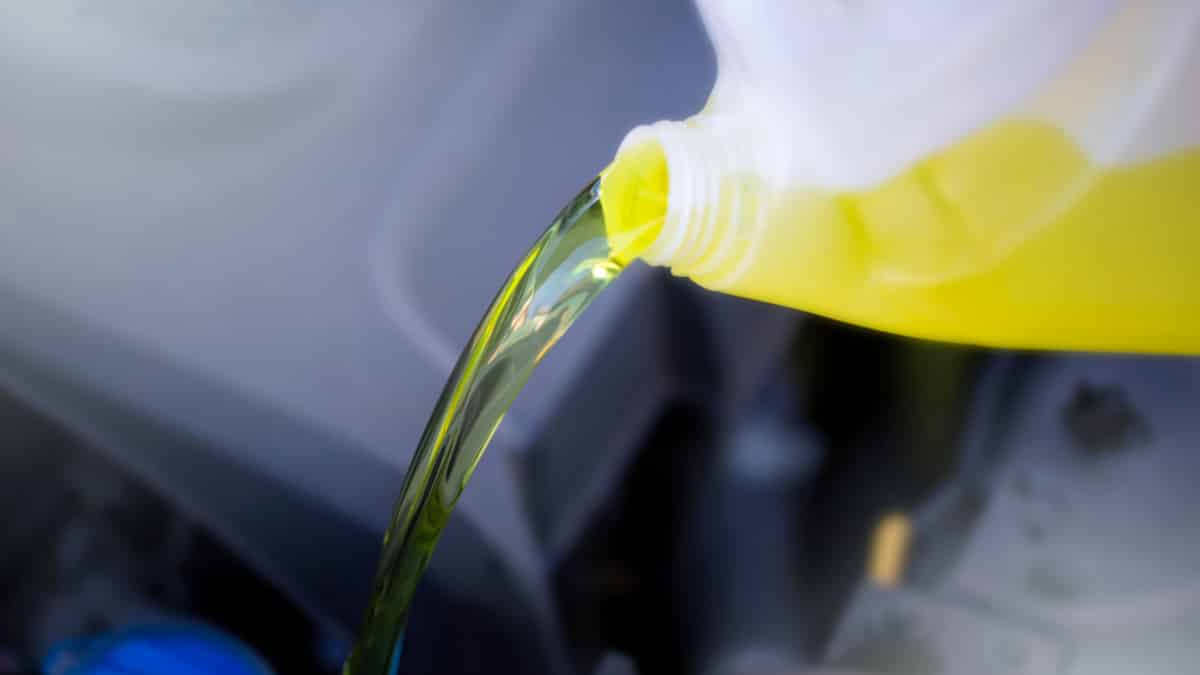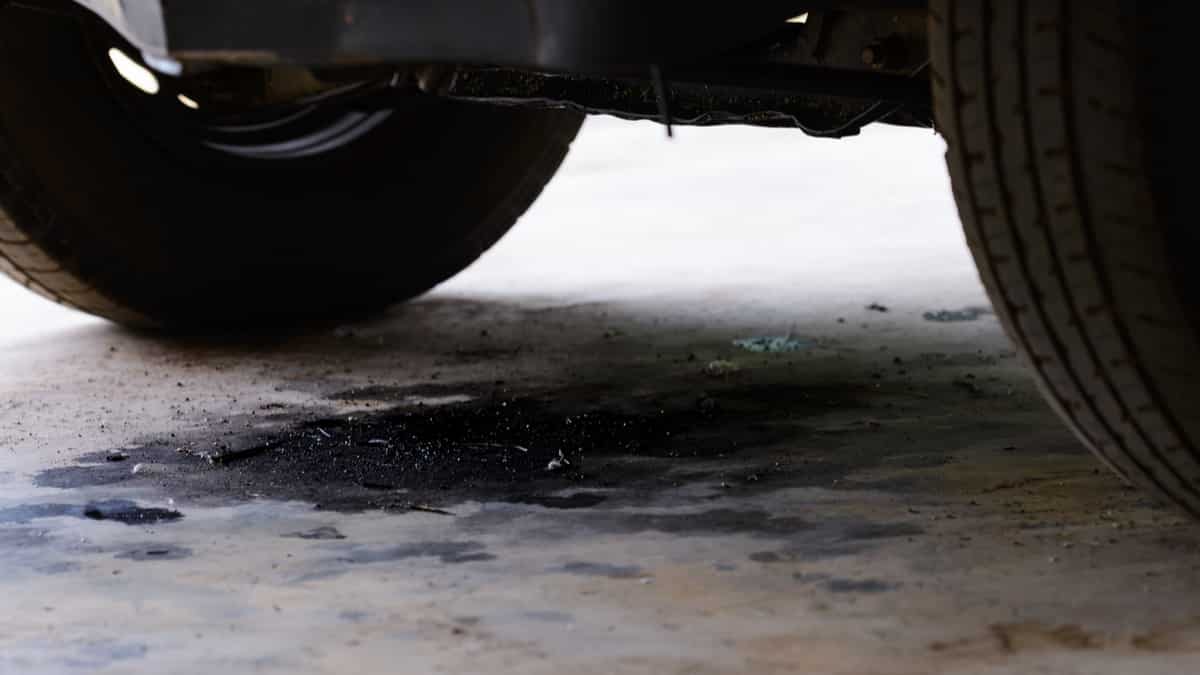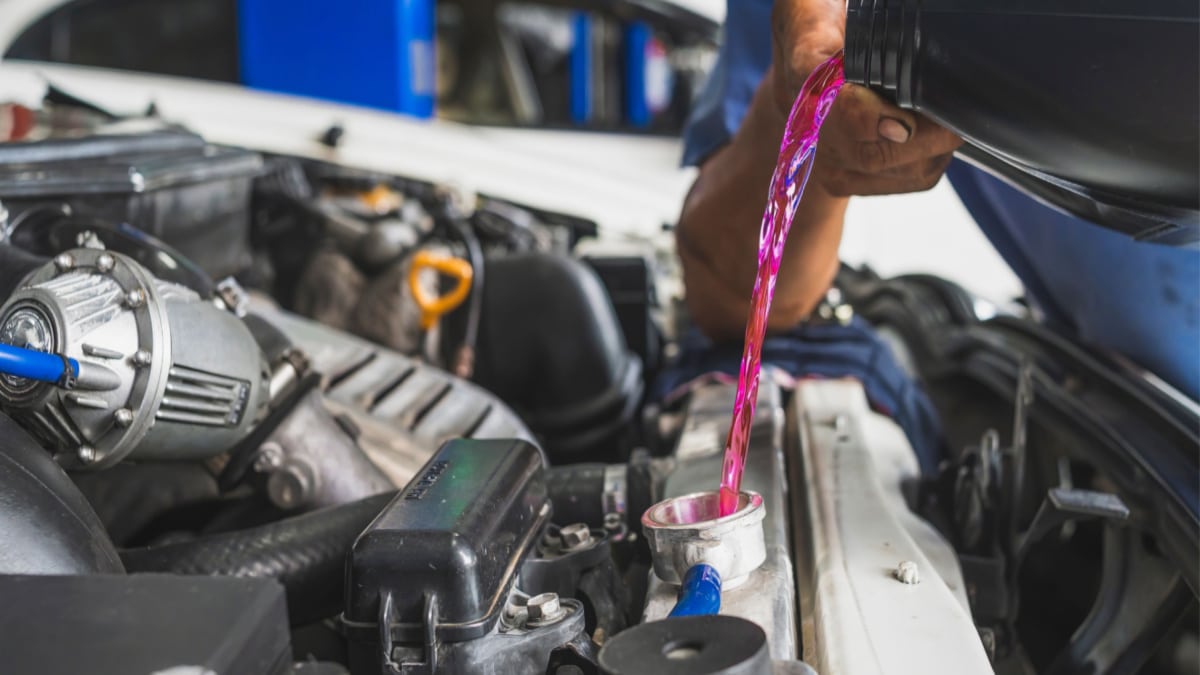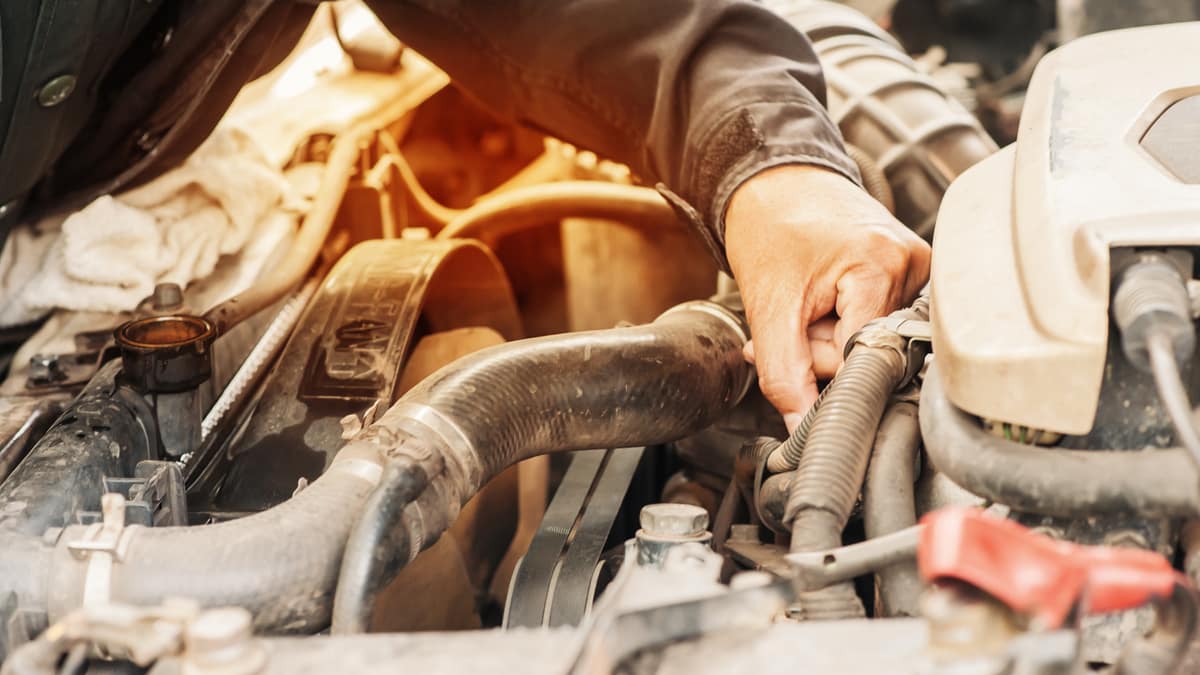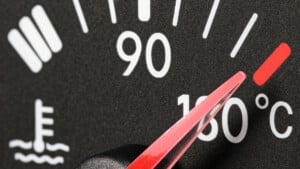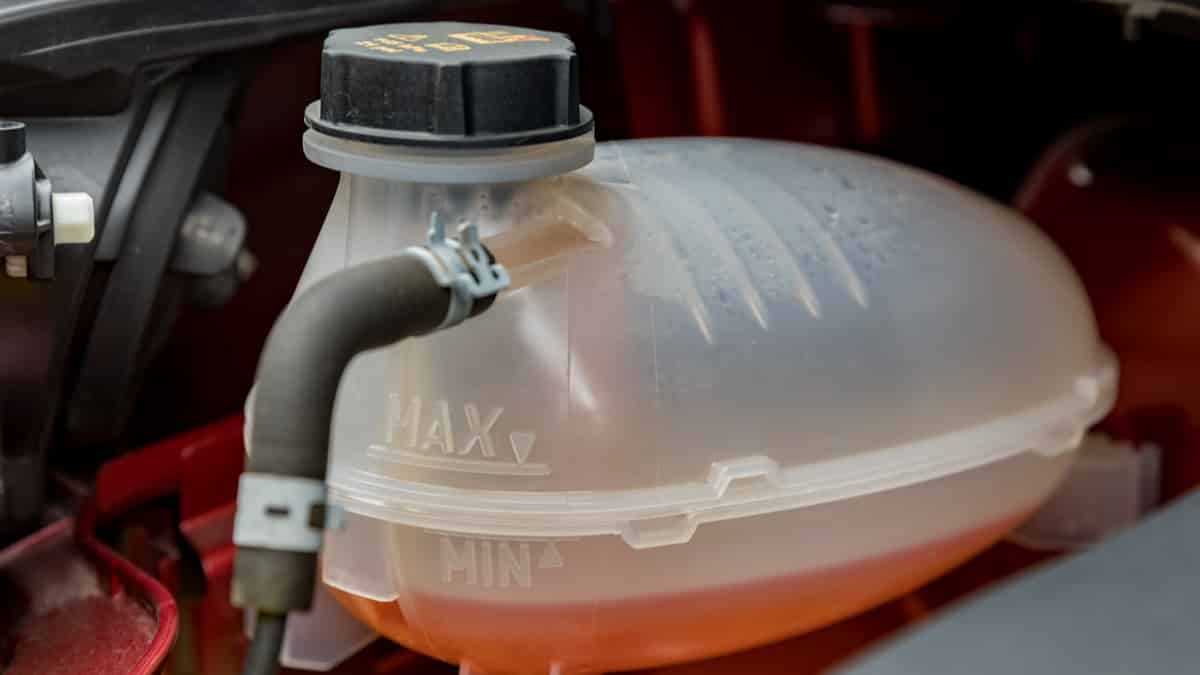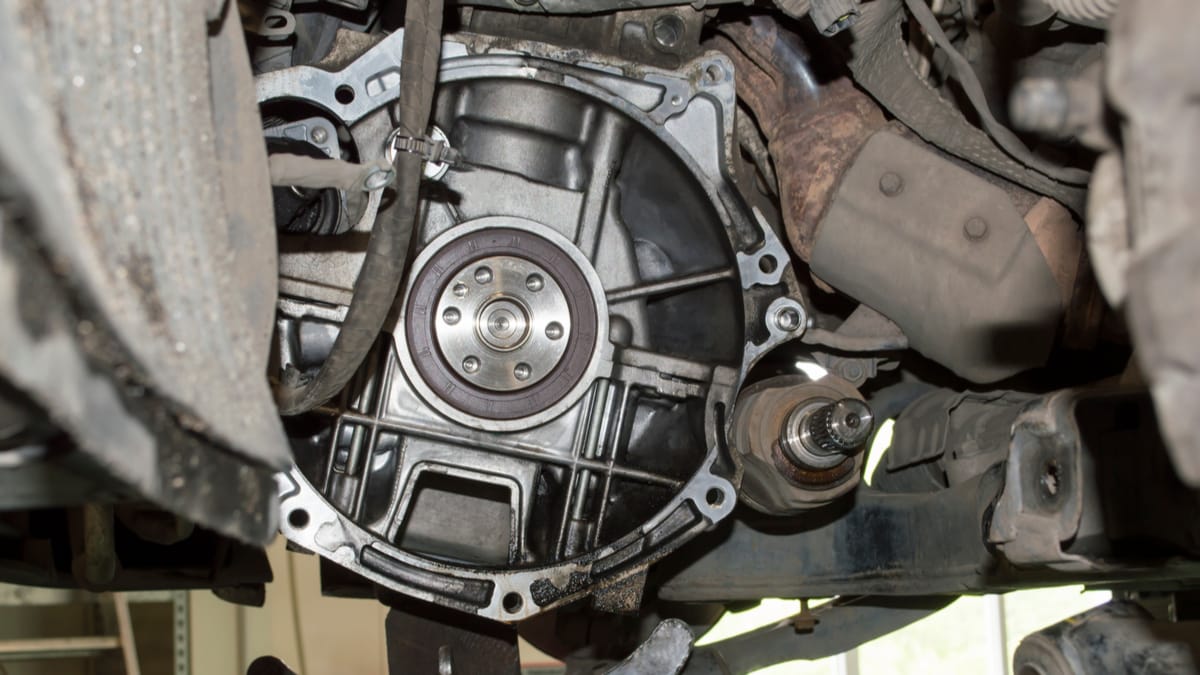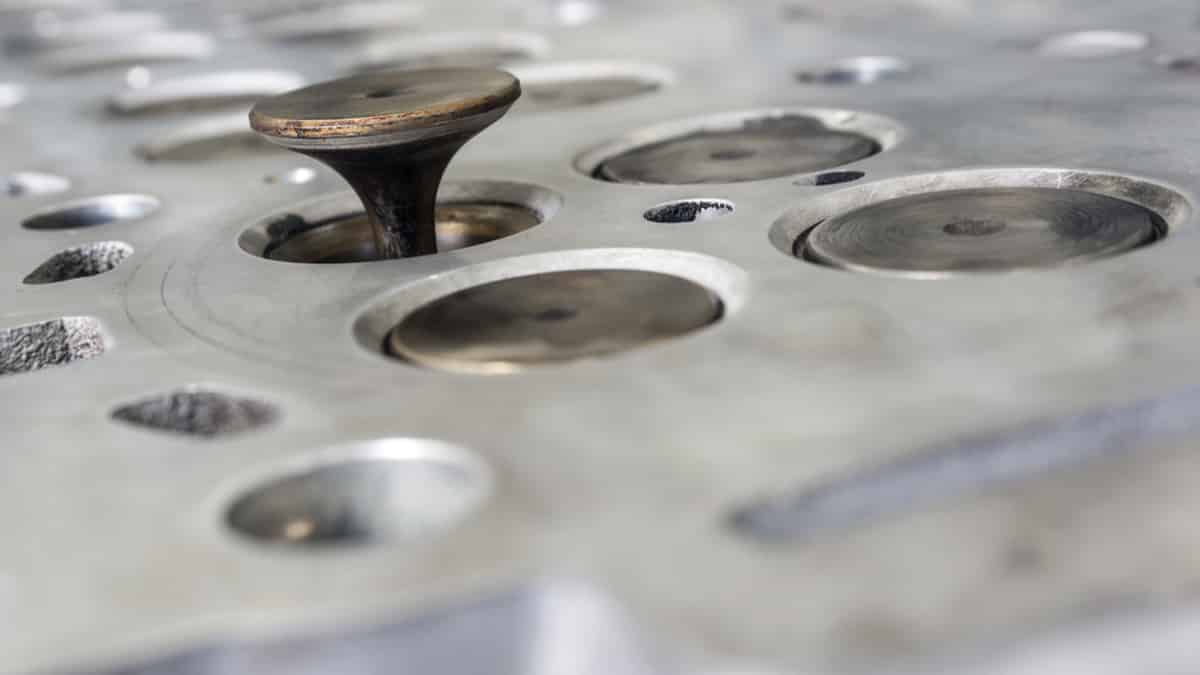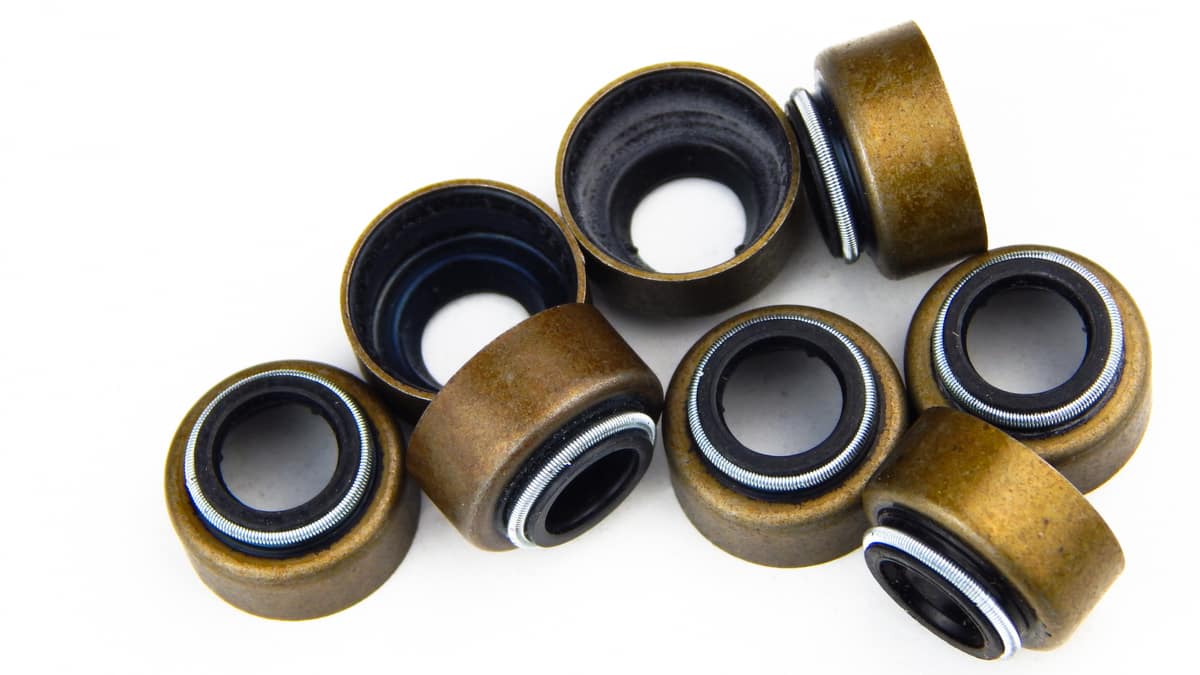Coolant is a necessary fluid in today’s vehicles. Not only does it keep the engine from overheating, but it also keeps the fluid from freezing in cold weather. Without the right amount of coolant, the engine can suffer irreparable damage. When coolant is leaking from a hose, it becomes difficult to ensure the fluid levels are correct.
For this reason, you need to know why coolant leaks from the hoses. We cover the top reasons and show you how to fix the problem. At the end of our guide, you also get some of your top coolant questions answered.
Causes Of Coolant Leaking From Hose
The most common reason that coolant leaks from the hose is because of damage. The hose becomes cracked or broken. Otherwise, coolant can leak because the clamp torque isn’t sufficient or the clamp is defective. Many problems with the hoses start out because the system overheats.
Let’s dive into these issues more fully.
1. Cracked Or Damaged Hose
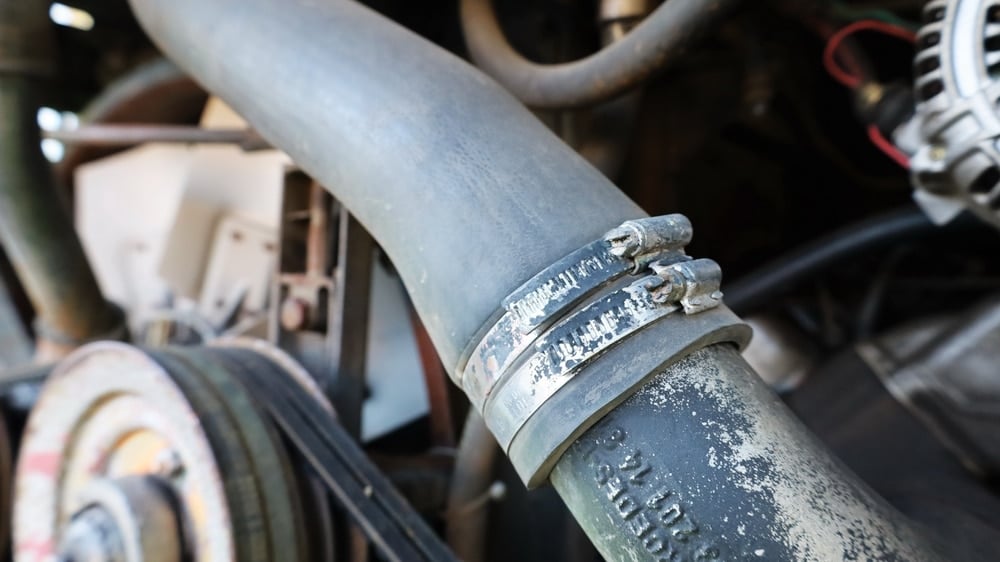
The most obvious reason that coolant would be coming from a hose is if it has become damaged. The hoses are durable but not indestructible. The constant heat and wear can take a toll on the material.
At first, the damage may just be a small crack. However, left unchecked, a hole can quickly form that would cause all of the coolant to flow out.
2. Not Enough Clamp Torque
The hoses are held on by clamps. Each of these clamps must be tightened to a specific torque to keep the hose in place.
If you haven’t applied enough torque, the clamp can become loose, leading to coolant leaking out. You will see moisture coming from the hose where it meets the clamp.
3. Hose Clamp Faulty
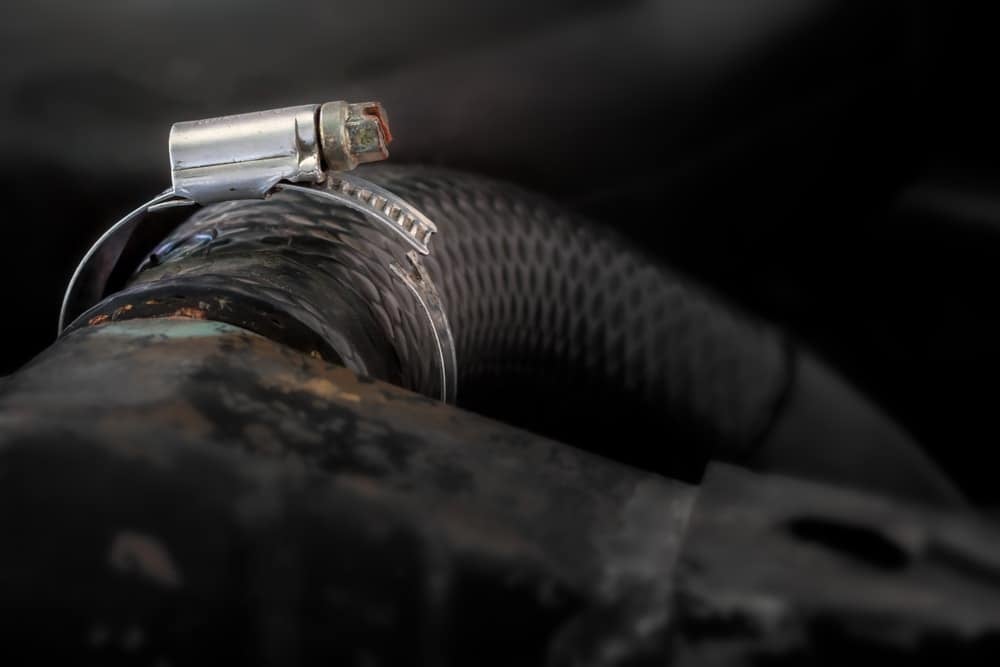
Even if you’ve applied the right amount of torque, the clamp can still be defective. Over time, the metal clamp starts to degrade and deform.
If it’s not applying the right amount of pressure due to defects, the coolant will start to leak. Again, this moisture will be seen around the clamp.
4. Coolant System Overpressure or Overheating
Numerous defects can lead to a cooling system that runs too hot or is pressurized too high. When either of these situations occurs, the hose can blow out and cause a leak.
One of the most prevalent issues is when a hose gets kinked. While this won’t immediately cause damage, it does reduce coolant flow leading to an overheating engine. That constant pressure takes a toll on the motor and the hoses. Eventually, something is going to blow, including one of the hoses.
How To Fix Coolant Leaking From Hose
When repairing the cooling system, it’s imperative that you fix all leaks. Otherwise, the system could still overheat from a lack of fluid and you could end up dealing with massive engine failure. Some of these fixes are simple to complete and others require advanced skills or equipment. Only perform the work you feel qualified to do.
1. Tighten Hose Clamp
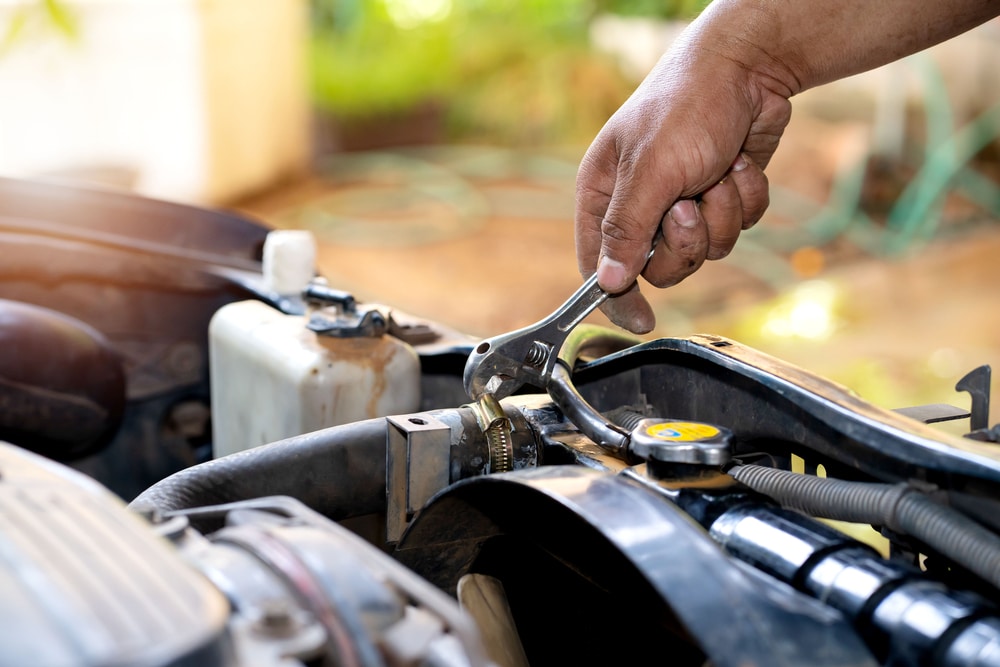
It’s important that all of the hose clamps are only tightened as outlined by manufacturer specs. You don’t want to overtighten any of the clamps, just as much as you don’t want to leave them loose. Either situation can lead to leaks.
Check the service manual for the proper procedure for your vehicle. In general, the right way to tighten a screw-type hose clamp is to apply pressure, but not too much that the rubber outer shell of the hose comes through the screw slot. If you go that tight, you could cut the hose.
Tighten the hose and run the engine. While it’s running, watch the area around the clamp to ensure nothing is leaking. If it’s still leaking, you may need to move on to the next step.
2. Replace Hose Clamp
If the clamp can’t be tightened enough to stop the leaks, you may need to replace it. While clamps are made to last a long time, they aren’t immune to defects and wear.
Thankfully, most hose clamps are relatively inexpensive. You won’t break the bank to get some new clamps.
3. Replace Hose
If the hose is damaged or torn, you must replace it. Some hoses are simple to replace and others can be more difficult. Only tackle what you feel comfortable with.
We recommend reading the service manual to get the appropriate procedure for your vehicle. Otherwise, you could follow these generic steps.
- Park on level ground. Put the car in Park and set the emergency brake.
- Identify the radiator hose that’s leaking. You can find the leak by running the engine and watching the hoses.
- Drain the coolant before removing the hose. Do this by opening the petcock found on the lower portion of the radiator. Place a bucket underneath to catch the coolant.
- Once the coolant has been removed, loosen up the clamps holding that radiator hose in place.
- Carefully work the hose off of the clamps. If you can’t get the hose off easily, use a knife to slice the hose at each end.
- Take off the clamps. Inspect them while they are off. If they are worn, now is also a good time to replace them.
- Push the new hose in place. Ensure it fits snugly and sits firmly at each attachment point.
- Slide the new clamps in place and tighten them to manufacturer specs.
- Close the petcock on the radiator.
- Fill the radiator with coolant. Make sure you use the right mixture and type. You also want to research how much your vehicle uses before you get started so you get it full. You also need to bleed the cooling system.
- Replace the radiator cap and start the engine.
- With a close eye on the hoses, allow the engine to reach operating temperature. If leaks still occur, shut the car down and repair them.
- Recheck coolant levels again after the vehicle cools down. You may need to top it off slightly.
Radiator hoses may need to be replaced every four years or 60,000 miles. By regularly inspecting them, you can prevent big leaks from happening.
4. Fix Overheating Issue
If the hoses or clamps fail because of overheating, you need to resolve this situation first. The engine could overheat because of low coolant levels, which is easy to fix. It could also be due to a mechanical failure, such as a defective thermostat.
One often overlooked problem is a kinked hose. When a hose gets kinks in it, the coolant can’t flow as it should, leading to an overheated engine. High-quality hoses don’t tend to kink, which is why it’s best to invest in something durable. If your car hoses are kinked, the best solution is to replace them with something better.
5. Visit a Mechanic
The cooling system is sophisticated and important. Therefore, if you aren’t sure exactly what you are doing, it’s best to leave the work to professionals. To start, an auto repair shop can handle the diagnosis for you and it usually won’t cost more than an hour of labor.
If you don’t have the equipment to handle the repair, you can also get an estimate from the repair shop. Choose a mechanic that offers a warranty on the work and read through online reviews for peace of mind. While you may spend a little more for a high-quality mechanic, it’s worth every penny to protect the car engine from failure.
Can I drive with a leaking coolant hose?
You should never drive with coolant leaking from the car. As the coolant levels drop, the engine could overheat, leading to catastrophic damage. Additionally, the coolant is not good for the environment, which is another reason to have it repaired as soon as you can.
Why is coolant leaking from the hose?
Cooling system hoses are durable, but they will fail over time. The hose material can handle a lot of heat and abuse but eventually cracks or breaks, causing coolant to leak out. It’s also possible that you have the clamp tightened too hard, which could also cause hose damage.
How much does it cost to fix a coolant leak from a hose?
If you need to replace a clamp, you won’t spend a lot of money. On the other hand, replacing a radiator hose can cost much more. On average, expect to spend between $150 and $450 for the labor and parts. If you need to resolve an issue that’s leading to overheating first, the cost will go up accordingly.
Can a coolant leak destroy the engine?
The coolant leak itself isn’t going to cause the engine to fail, but a lack of fluid will. As the coolant leaks, there won’t be enough in the engine and it will overheat. Even if the coolant leak is minimal, it can rapidly deteriorate without you knowing. For this reason, you should have all leaks fixed immediately.
Are coolant leaks easy to fix?
It’s not typically difficult to replace a clamp, as long as you know how tight to make it. Some radiator hoses are simple to fix, while others can be complicated. Read about the procedures in your service manual before deciding if you should tackle the repair at home or call a professional.
If there’s coolant leaking from a hose on your car, it’s time to take prompt action. You don’t want coolant leaking or the engine could be damaged.
Repair the leak yourself or visit a local mechanic. While it may cost a little bit upfront to have it repaired, it’s nothing compared to the cost of replacing the engine because of neglect.
Learn more:
- Coolant Leak When Car Is Not Running – Causes & How to Fix it
- How Much Coolant Loss is Normal? (& Does It Evaporate?)
- Water Leaking From Under Car? – Causes & Fixes
Categories: Coolant, Troubleshooting
